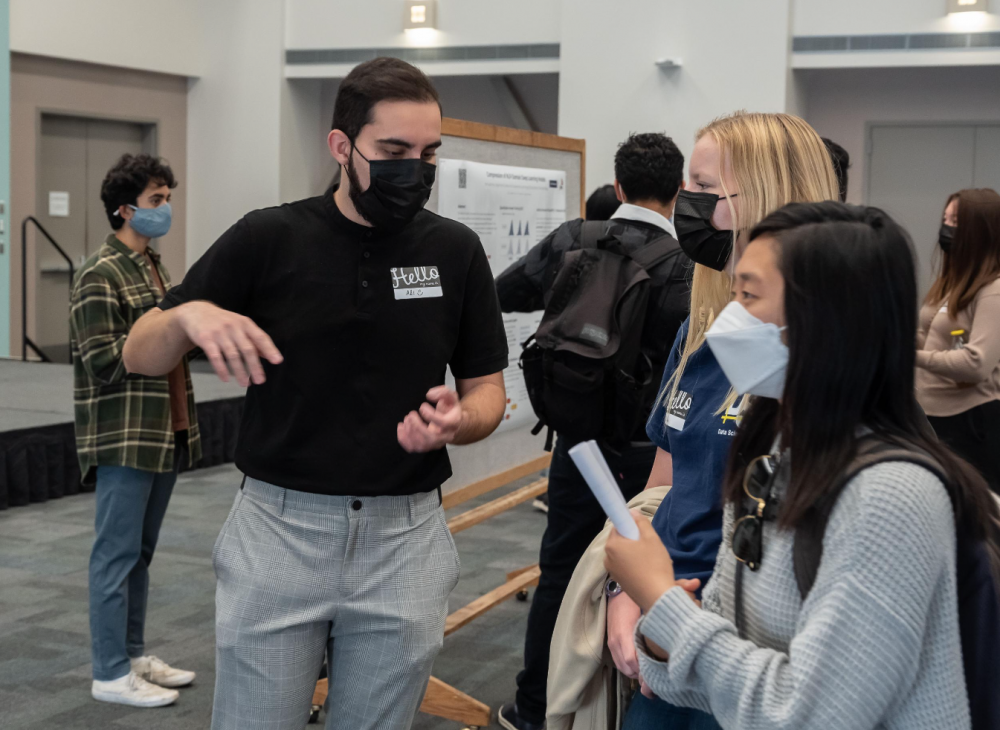
Diving into the Data
The good news: Our world is becoming more data-intensive, which means that we have at our fingertips the ability to find solutions to broad problems, make big and informed decisions, and even recognize and get ahead of potential issues. The challenge: We need to become more data literate and expert at handling this growing trove of information.
Fortunately, UC Santa Barbara students are rising to the challenge. Within the multidisciplinary Data Science Initiative, the undergraduate program teaches students to approach data from different angles — from generating and gathering it to understanding it and using it to gain insight into some of our stickiest problems. They showed off those skills in their second annual capstone showcase, which also included projects from Cal Poly San Luis Obispo data science students.
The environmentally focused and still-new Bren School MEDS Program, also part of the Data Science Initiative, held its own capstone event.
“What makes the data science capstone special is that it provides an insight into the field of data science, which is such a hot area for jobs right now,” said Tim Robinson, academic coordinator at the Department of Computer Science, one of many departments participating in the initiative. “Our capstone project isn’t made up of students from only one department — we have computer scientists working right alongside environmental scientists, economists working with physicists, political scientists working with mathematicians. The varying points of view presented by participants to solve given problems adds something unique.”
How can we gauge opinion on climate change in our efforts to formulate policies that address the threats of global warming? The ENVENT Lab team is investigating that topic as they build differentially predictive models on climate opinion. How can we understand and predict burnout in healthcare workers in the age of COVID? Two teams sponsored by Evidation Health are conducting research in that area with data taken from wearable technology. Other projects involve analyzing data on oxygen levels in the ocean off the California coast; building machine learning models to predict fraud and understanding brain dysfunction by studying measurements from lab-grown brains.
Students spend the three-quarter sequence of this program getting acquainted with the different aspects of data science, including methods, computing, ethics and presentation skills. Along the way they learn to work with researchers who mentor them and with industry partners who provide them with resources and real-world applications for their skills.
“All the projects are inherently interdisciplinary,” said Alex Franks, a professor in the Department of Statistics and Applied Probability (PSTAT) who, with fellow instructor Trevor Ruiz, runs the capstone course sequence. “All of the projects require both computational and statistical expertise, but they also require that the students become experts in the particular domain they are working in.”
More than 50 students are enrolled in the program; the capstones are a key precursor to the newly envisioned UCSB data science major that is currently under review.
“They offer a team research opportunity for many students with no such prior experience,” said PSTAT chair Michael Ludkovski, who pointed out that the capstones are linked to the National Science Foundation-sponsored Central Coast Data Science Partnership, a collaborative program that establishes pathways for data science training through coursework and real-world projects.
“I hope visitors come away impressed with the diversity of projects that we have covered this year, and excited about the numerous ways that data science methodologies can be brought to bear on important real-world programs,” Franks said.



